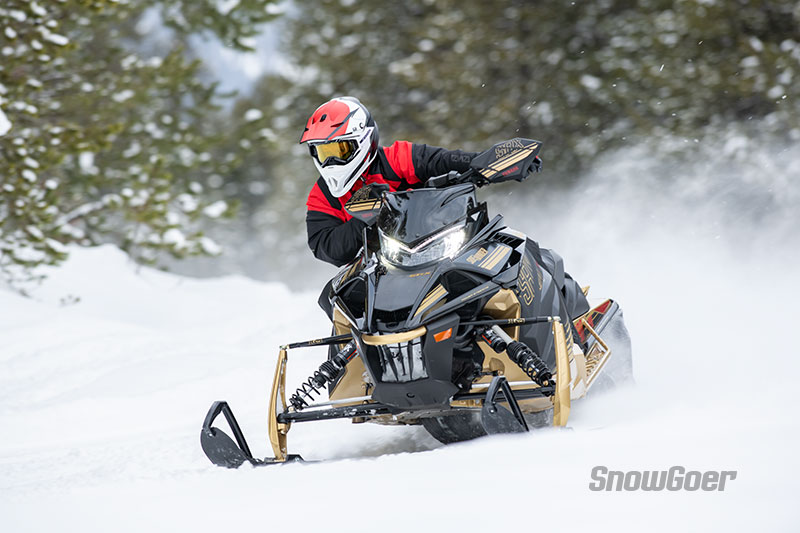Let’s just call it Yamaha’s power play – and Team Blue hopes that it leaves the other snowmobile manufacturers feeling like they’re a man short.
For 2011, Yamaha has unveiled a brand new Apex that features new-to-snowmobiling electronic power steering (EPS) that lightens steering, dampens feedback that comes through the handlebars and enables Yamaha engineers to significantly improve the handling of Yamaha’s showcase four-stroke.
But power steering is just one half of the story, because Yamaha also added more power to its Apex, thanks to a high-tech exhaust system that acts like variable exhaust does on a two-stroke – allowing the engine to build cylinder pressure in low RPMs but also allowing it to breath optimally in high RPMs. Again, this variable exhaust system allowed Yamaha engineers to make other changes to the powerplant, making it extremely linear and a whole lot of fun.

These changes are found on Yamaha’s 2011 Apex, Apex SE and Apex XTX models. The rest of Yamaha’s lineup returns essentially unchanged for the next season.
Inside The Apex EPS
Three years after completely changing the utility ATV market by unveiling electronic power steering on its Grizzly, Yamaha is attempting to do the same thing in the snowmobile market.
At a unique sneak preview of their new machines, Yamaha officials let us test an unmarked Apex featuring the power steering system, and the difference truly is incredible.
The EPS system on the Apex models collects feedback from the skis and data about the engine’s RPM and the machine’s speed, and then provides a pre-determined amount of assistance to the split steering shaft. At low speeds, it provides maximum assistance, but the assistance decreases as speed increase – just like on your car — so the steering never feels loose to higher speed.
The EPS also has the effect of soaking up energy that comes up from the front suspension through the handlebars, and it takes away the sore-between-the-shoulderblades ache you get after a long trail ride.

Also, because the engineers now didn’t have to worry as much about heavy steering, they changed the spring and sway bar settings on the front end, plus added a new spindle and installed new skis. Combined, they make the base Apex model we tested handle much better – inside ski lift normally felt on sharp turns on an earlier Apex was negated, and the sled its line better than any previous Yamaha four-stroke.
Other Apex Updates
The Apex changes didn’t stop there, however. The Apex engine displacement reads the same in the spec chart, but this engine is much more lively and has a much more trail-friendly powerband than the Apex of old.
It starts with an exhaust setup. The system, called EXUP for EXhaust Ultimate Performance, debuted in Yamaha’s sport motorcycles. It utilizes a valve in the exhaust that is closed at low RPM to build cylinder pressure, but opens at high RPM to increase airflow. This allows designers to create an engine that feels super crisp on the bottom but stout up top. In the field, we felt it’s torquey pull all the way through the powerband.
The Apex engine gets a new airbox and throttle bodies, new valve timing and a knock sensor, and it exhibits less engine braking. Engineers also added more cooling and a higher-output alternator.
The base Apex has all these features with a 128-inch Rip Saw track to put that new powerband to the ground. Extrovert drivers were added to prevent ratcheting. The upgrades Apex SE features Fox FLOAT 2 shocks up front and the Mono Shock II rear with the largest shock absorber we’ve ever seen on a stock snowmobile – the Fox Mega FLOAT. It has roughly three times the air volume of the standard Fox FLOAT 2, providing what Yamaha officials say is a very plush initial stroke but making it nearly impossible to bottom. We can’t wait to try it.
The new Apex XTX, meanwhile, has a rear suspension setup similar to the Nytro XTX – meaning it gets a 144-inch long rear suspension, with tipped up rails on the rear.






